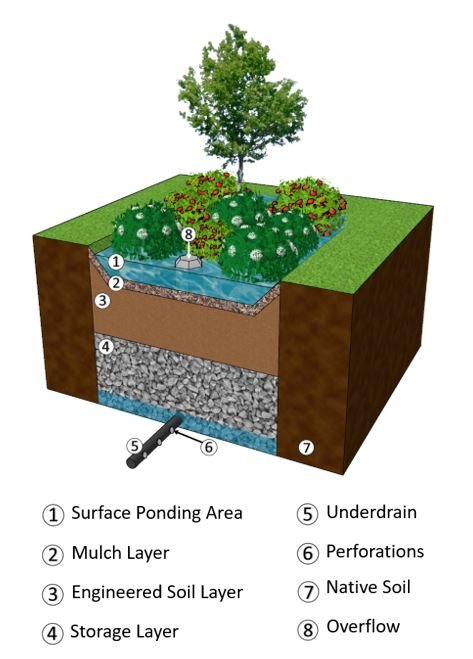Bioretention areas filter, detain and infiltrate stormwater runoff. Bioretention areas are known for their water quality, quantity and water balance benefits. The LID is designed with an engineered soil layer to store and treat runoff, a storage layer to detain larger volumes of water which then can infiltrate to surrounding native soil. Bioretention areas are designed with an overflow, optional subdrain, an outflow and a native soil infiltration rate. Key features for bioretention designs are shown in the diagram below.
| Parameter Name | Description | Default Value |
|---|---|---|
| Surface Area Ponding | ||
| DEPTH-AREA CURVE | Depth area curve for surface ponding area, depth is defined from the bottom of the ponding layer | – |
| Mulch Layer | ||
| DEPTH | Depth of mulch layer (mm) | 0.3 |
| POROSITY | Fraction of soil that is made up of spaces (pores) between particles | 0.4 |
| Engineered Soil Layer | ||
| SOIL MOISTURE | Initial soil moisture content of the engineered soil layer (fraction) | 0.3 |
| INFILTRATION | Rate with which water moves through porous material (m/hour) | 0.5 |
| POROSITY | Fraction of soil that is made up of spaces (pores) between particles | 0.467 |
| Storage Layer | ||
| DEPTH | Depth of the storage layer (m) | 1 |
| POROSITY | Fraction of storage layer that is made up of spaces (pores) between particles | 0.4 |



